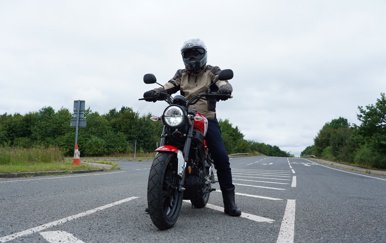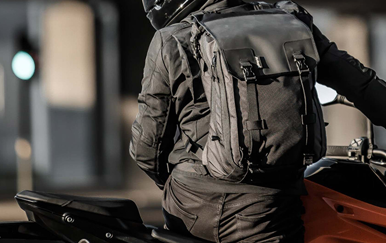Buying a motorcycle for the first time may seem like an extremely daunting process, regardless of whether you’ve bought a car before or not - with motorcycles it is a completely different ballgame.
In the blog, we are going to be going through how to buy a motorcycle whether it be new or used, and giving you the best top tips and advice, as well as weighing up the pros and cons for each option.
So without further ado - let’s get into it, shall we?
Choosing your style of motorcycle:
If you’ve never ridden before, choosing your first bike can feel pretty daunting, with a long list of different manufacturers, engine sizes, and bike styles to choose from.
Your age, the type of licence you hold, how much you’re willing to pay, as well as how far you’re likely to be travelling will affect which kind of bike you’ll be looking to buy.
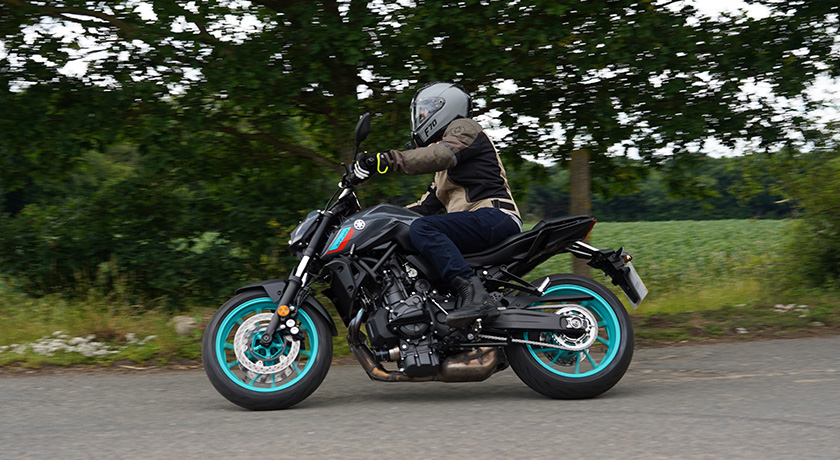
Types of motorcycle
First things first, when deciding on which motorcycle you want to purchase it should typically fit into one of these categories:
- Naked
- Cruiser
- Sport Bike
- Touring/Sport Touring
- Adventure
- Scooter/Maxi-scooter
- Classic/Retro
- Dual-sport
Where should I buy my motorcycle from?
There is no right or wrong answer as to where you should get your motorcycle from - both options have their positives and their negatives.
If upfront costs are of concern to you, opting to purchase a second-hand motorcycle via a private seller can be a far more affordable option. However, if you purchase privately, it means you will not receive an additional warranty or the assurance that your bike has been checked over by a professional prior to purchase.
On the other hand, if you opt to buy from a dealer, your motorbike will typically come with either a 3 or 6-month warranty and will have been professionally checked over and likely to have been recently serviced. These extras are usually reflected in the price, hence them being more expensive.
Buying a brand new motorcycle
Purchasing a new motorcycle doesn’t necessarily mean that the person buying just wants to splash their cash about, nowadays it actually may work out as a more affordable way to purchase a bike - especially with the introduction of monthly payments, but again this is entirely personal preference and budget dependent!
Best advice when buying a new motorcycle
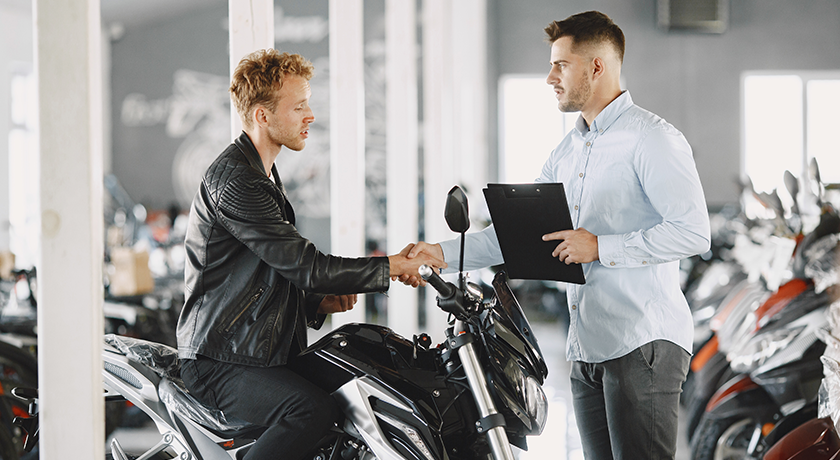
Whether you’ve bought motorcycles in the past or whether it is your first bike, if you have never purchased brand new ones before, it can be quite a daunting experience. There are a few handy tips on things to remember to help the process go as smoothly as possible, such as:
Make sure to do your research
The urge to go out and buy yourself the first motorcycle that catches your eye for some person can be irresistible, however, there are a number of people who end up doing this and find out down the line the bike is too heavy or perhaps too uncomfortable for their daily commutes.
It is advisable to look at as many reviews, articles, and YouTube videos before you walk into a dealer to have an idea beforehand of what you’re looking for. Once you get to the dealer, you will want to do as many test rides as you can. While you might go into a dealer with your dream bike in mind, once you’ve ridden it you might feel entirely disappointed.
Find a reputable dealer
If you’ve decided to buy yourself a shiny new bike, you're best off getting it from somewhere with a good reputation. Finding good dealers in your local area can come from Google research, speaking to like-minded individuals on motorcycle forums, or even asking Facebook pages - there will always be someone out there to point you in the right direction!
Utilise the manufacturers online configurators
When buying a brand new motorcycle, manufacturers will often have online configurators for you to play about with, whether that be by changing the colourways or ‘spec-ing’ up the bike with accessories (luggage, safety bits etc) – either way this feature truly allows you to customise your bike to truly suit you.
Consider which financing option is for you
When it comes to purchasing a motorcycle, there are three ways in which you can do this - there is no right or wrong answer on how you should purchase your new motorcycle, whichever option you go for will depend on you and your personal situation:

1. Pay in full outright
Obviously, when looking to buy your new motorcycle you can just pay for this outright whether that be if you have the money sitting there saved up, or you opt to get out a personal loan and pay for it that way.
2. PCP (Personal Contract Purchase)
PCP monthly payments are where you put a slightly smaller deposit down, as well as paying monthly payments for an agreed period of time. This for example may be three years in which you may the monthly payments and then at the end of the three years you can have the option to either buy the bike and pay off the outstanding balance or alternatively switch it in for a new bike.
3. HP (Hire purchase)
The hire purchase option allows you to put a higher deposit down and then on top of that pay the rest off in monthly instalments. At the end of the three or four years, the motorcycle will be entirely yours.
Don’t feel pressured!
When going to a dealer, it is important to remember that people who work there intention is to sell you a bike and get their commission. However, do not feel pressured into buying a bike or making any rash decisions until you know that you feel definite in your choice, especially if you’re going to go down a financing route.
Think ahead, will these monthly payments be feasible, are you be able to afford them, will you remember to pay them? If at any part you are ever unsure, then it is advisable to stay away from financing to avoid any trouble. No fancy bike is worth putting yourself in a tricky financial position!
Also, it is worth noting that if you don’t feel comfortable riding your motorcycle home (and honestly, I wouldn’t blame you) - there are plenty of great dealers out there who will deliver the bike directly to your home address!
Pros and Cons of buying a new motorcycle:
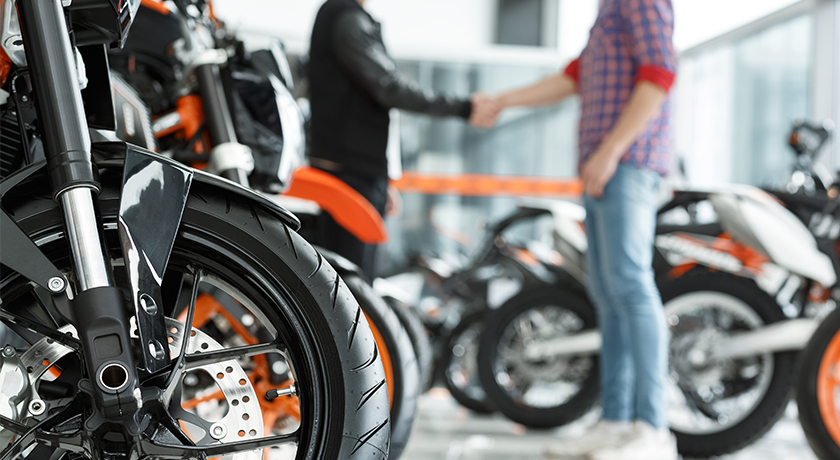
I think it goes without saying that the thought of having your very own brand-new motorcycle is an exciting thought, and thanks to finance options has become a lot more accessible for many people.
However, before making the leap to purchase a new motorbike, it is worth weighing up the pros and cons:
Advantages of purchasing a brand new motorcycle
One great thing about brand-new motorcycles is the finance options you have available to you. As we mentioned earlier when buying new motorcycles you have three options and for someone who doesn’t have a spare £15,000 it can be a great way to get them on a bike they deserve and can afford - it has helped open the door to a lot of people who can’t afford a huge downpayment!
Availability of finance options
One great thing about brand-new motorcycles is the finance options you have available to you. As we mentioned earlier when buying new motorcycles you have three options and for someone who doesn’t have a spare £15,000 it can be a great way to get them on a bike they deserve and can afford - it has helped open the door to a lot of people who can’t afford a huge downpayment!
Comes with manufacturer warranty
Typically new motorcycles come with some sort of warranty, whether that be a dealer or a manufacturer warranty. This will cover your bike up to a set amount of miles or years - depending on which comes first.
No unknown riding history or crash damage
Another bonus with new motorcycles is there is no previous riding history or damage before you. This means you won’t have to worry about there being any risk of undetected issues that can end up costing you a pretty penny!
Disadvantages of new motorcycles
New bikes depreciate very quickly
One of the biggest downsides to new motorcycles is that their value depreciates very quickly the moment that the motorcycle drives out of the dealership. It will typically also continue to depreciate for the first 2-3 years.
Long waiting times
As we mentioned previously, when ordering a new motorcycle there is a high chance you will be waiting a long time for it due to the backlog of orders. Your waiting time could be anywhere between a couple of weeks to a couple of months.
Much more expensive
Whilst this may be a slightly obvious one, if you buy a new motorcycle straight from the factory, you will be looking at the bike costing far more than a second-hand bike.
Purchasing a used motorcycle
There are a variety of reasons why people opt to buy a used motorcycle, it isn’t just due to people being tight.
A lot of people also choose to sell their motorcycles privately instead of at a dealership as you are more likely to get more return on your motorcycle privately - which is ideal if you’re looking to upgrade to a newer or different bike!
There are plenty of used motorcycles out there whether that be from private sales to dealerships so there really is something out there for everyone's personal preference and budgets…
Should I buy a motorcycle through a dealer or private seller?
As we’ve mentioned previously, you can either buy a second-hand motorcycle either via a dealer or by private sale, however which one you opt for is entirely up to you and your personal preferences.
If you’re concerned about the upfront cost of your bike, private sales tend to be less expensive than buying directly from a dealer. However, you won’t receive an additional warranty or the assurance that your bike has been checked over by a professional prior to purchase.
On the other hand, if you opt to buy from a dealer, your motorbike will typically come with either a 3 or 6-month warranty and will have been professionally checked over and likely to have been recently serviced. This is usually reflected in the price, with prices at dealerships being more expensive than private sales, even for second-hand vehicles.
Questions to ask when going to view second-hand bike
When buying a used motorcycle privately, it is important to ask the right questions to the seller such as:
- Are there any modifications? - You will need to know this information when insuring your motorcycle, if you do not declare modifications it can lead to complications later down the line and in the event of a claim.
- Is there any crash damage? - Crash damage can unfortunately mean that there is some serious structural damage to the bike which would be a waste of your money as well as unsafe.
- Does it have any finance remaining? - If the original owner still has outstanding finance on the motorcycle they’re selling, it could mean that they are trying to sell the bike fraudulently.
Top Tips when buying a second-hand motorcycle
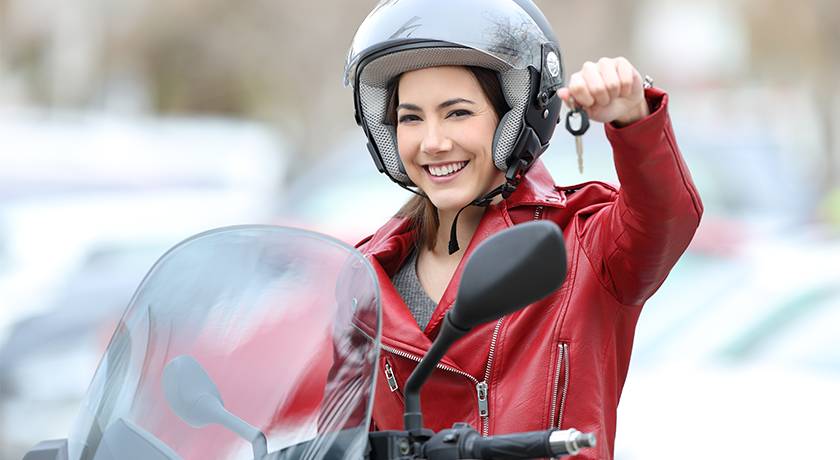
A few things you can do on your end before parting with your hard-earned cash are as follows:
Research the bike thoroughly
Once you’ve found a bike you really like, make sure to do your research. Whether that be via Google or motorcycle forums, really get to know the bike through and through so when you go to visit the bike in person, you will know if there is anything wrong or out of place.
Take advantage of the season changes
It is worth noting that the used market fluctuates depending on the time of year, with the general consensus being that spring is a 'good time to sell' as prices go up thanks to everyone eagerly looking out of the window at blue skies and longer days. That does make it an arguably worse time to buy, though, so perhaps worth a mention.
Our advice is, if you are looking to buy a second hand motorcycle from a private dealer – make sure to start looking in the colder months when fewer people will be out purchasing themselves a new set of wheels.
Check MOT History
Finding a vehicle's MOT history could not be easier, when you find a bike you’re interested in make sure to head over to the GOV.UK website to check any pre-existing issues with the bike, as well as the mileage.
Check the motorbikes paperwork
Again, similar to the one above. It is important to check over the service history in the log book and any other receipts for work undertaken.
You should also make sure to check the VIN number on the frame and the engine number match identically to the ones stated on the V5 document. It would also be worth checking that the address stated within the V5 is the house where you end up viewing the bike - if there is no paperwork with the bike, turn the other way, it could mean that there is a possibility that this bike has been stolen!
Look around the bike for any sign of crash or accident damage
When looking around the motorbike, you really need to check the bike closely. The best advice we can give you is to start from the bottom of the bike and work your way up, making sure to spot any signs of scratches or scuffs on the bike - yes they may be perfectly innocent, however, there is always a possibility it could be from an accident or in the event the bike has fallen over.
Make sure to check areas such as the fork legs, the engine case, bodywork and frame, handlebars and levers as well as the radiator and exhaust.
If buying privately make sure you get a receipt and the New Keeper section of the V5 written out
If you do choose to buy a motorcycle privately, make sure you get a receipt from the seller that states all the details of the bike, the seller's name as well the amount that has been paid. You must also make sure that you have filled in the new owner's section of the logbook as well as the mileage which the previous owner should send straight to the DVLA - you will receive the new logbook.
How can you tell if a motorcycle is stolen?
Unfortunately in this day and age, there is an increasing amount of motorcycles and scooters being stolen from our very streets. Most thieves will go on to strip your bike down and sell it for individual parts, however in very few cases some thieves may try to make a quick sale and sell your bike whole.
When shopping around on sites such as Autotrader or even Facebook Marketplace, always be cautious - think of it this way, if you think the price is too good to be true, chances are it probably is!
You can also check if the second-hand motorcycle you’re looking at is has outstanding finance, had been involved in an accident or been stolen through a few handy websites such as:
I’ve found out the motorcycle I was going to purchase is stolen, what should I do?
In the very rare event that you do find out the motorcycle you’re looking at is stolen, the first thing you should do is contact the authorities. Explain the situation and how you’ve come to find out that the bike is stolen, as well as provide the seller's name, address, and any other information that could help the police catch the thief.
Once you have done this you need to make sure that the seller is unaware that you know the bike is stolen and walk away from the conversation, you cannot predict how someone will react if they get caught out, so it is best to stay as far away as possible to protect your safety.
Positives and Negatives of buying a used motorcycle:
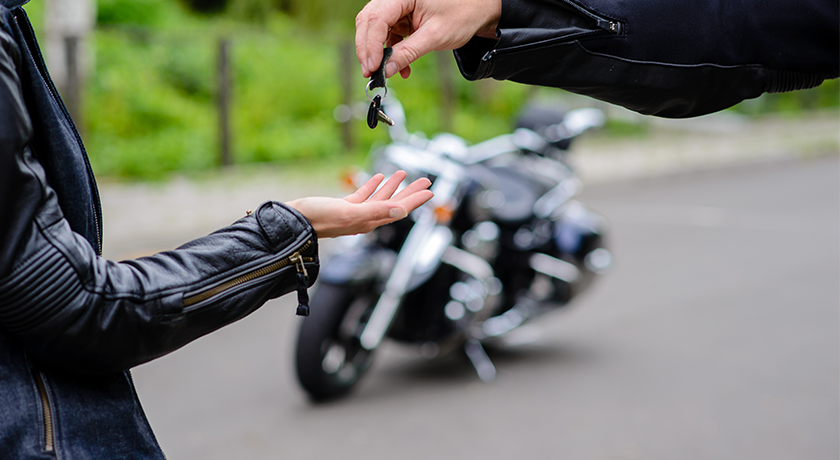
Much like anything, there are positives and negatives to buying a used motorcycle. These include:
Advantages of used motorcycles
Cheaper to purchase
One of the downsides to new motorcycles is that the moment you leave the doors of the dealership they have depreciated by an average of 20%. This is a positive for those looking to buy a second-hand bike as even a bike that may be 2-3 years old will be far cheaper than a brand-new model.
Plenty of choices and instant availability
Another benefit to used motorcycles is there is far more choice out there with new motorcycles, especially when factoring in that you can either find one you like at a dealer or via private sale - the options are limitless.
Also, if you’re looking at a second-hand motorbike, it will mean that you will get it far quicker than you would if buying a brand-new one. Many motorcycle manufacturers have huge back orders in motorcycles which means you may be waiting weeks or maybe even months.
Can cost less to insure
Second-hand bikes are typically cheaper to insure than their brand-new counterparts. The main reason is that they're often lower in value, and secondly because a lot of insurers give an "age of vehicle" discount.
Disadvantages of used motorcycles
You will never know truly how it has been ridden or treated previously
When purchasing a used motorcycle, it is essential to ask for the entire history of the bike as well as find out if it has any crash damage. Whilst you may never get the full insight whether that be from a dealer or a private sale, you need to have your thinking cap on at all times.
May require work done to it
Before purchasing a bike, you need to make sure that the bike truly fits the description the seller or dealer has given you. If you don’t you may end up with a bike you need to pay out even further for work to be done to it when you start riding it.
Fewer finance options
Another downside of second-hand motorcycles is the limited finance options available. When purchasing a new bike, you will have a variety of options available to you such as paying monthly. While you may be able to do this in a dealership, if you opt to purchase privately you will need to pay outright.
Buying a motorbike from auction
If classic motorcycles are more your speed, or perhaps you’re thinking of building up a classic collection - chances are you'll be looking at purchasing one of these retro bad boys from an auction.
Now if you’ve ever been in a bidding war on websites like eBay, you’ll already have a taste of what a real-world auction is like. However, one of the bonuses of attending auctions in person means you can actually look at (or maybe even test ride if you are very lucky) the bike before you even attempt to bid on it!

Types of motorcycle auction:
Commonly, there are two types of auctions such as:
1. High-end auctions
The first type of auction we are going to be speaking about today is high-end auctions. High-end auctions such as Bonhams, tend to specialise in the more premium or rare motorbikes that often come with a fairly hefty price tag.
Typically the sorts of bikes sold at these auctions come from families who have been passed them down by someone who has passed away, or those wanting to make an investment by selling their classic motorbike.
A bonus of purchasing a motorbike from an auction means you have far more choice than you would at a standard dealership - as well as potentially picking yourself up a sweet deal!
2. Commercial auctions
The second type of auction is a commercial auction. Commercial auction companies such as British Car Auctions (BCA) are typically less exclusive than high-end auctions and have 23 different auction centres throughout the UK.
Commercial auctions tend to collect their bikes from dealerships, ex-fleet vehicles (such as police or courier bikes), or bikes that have been repossessed by finance companies. Thankfully, unlike high-end auctions, commercials are one of the quickest and easiest ways to get rid of motorbikes for dealers, meaning they tend to go for much cheaper!
Top tips for purchasing a classic motorcycle from auction
Much like buying your first new motorcycle from a dealer, going to your first motorcycle auction can be a daunting and overwhelming place. However, we have compiled a few tips to help you out along the way:
Stay within your means
Whilst it may be tempting to let the excitement of auctions overwhelm you, it is important you stick within the agreed budget. The last thing you want to do is end up bidding on something you wouldn’t be able to afford or perhaps something that would put you out of pocket. It is worth noting that you will need to remember to factor added costs such as auctioneer fees, VAT, and if required, a way of transporting the bike home into your budget total as well.
Do your research beforehand
Before entering the auction hall you should have a good idea about what the bikes on auction are typically worth on the market. Equally, do not always assume that the catalogue price of their showcasing is the reserve price. Auctioneers tend to put a guide price at the bottom of the catalogues on purpose in order to get as many people bidding and entering the auction as possible.
Don’t just look for bikes, check for original parts and accessories
If you’ve managed to win the bid and your dream bike is within reach, you should still keep checking around the auction whether that be for original parts, or accessories for a specific bike. If anything goes wrong with the bike, parts outside of this auction may be tricky to find so it is always better to be safe than sorry!
Check the bikes very carefully
Typically auction bikes are ‘sold-as-seen’ meaning you won't get to see them in running order, and the catalogue will give you as accurate of a description about the condition of the bike as possible. In cases where bikes have been inherited, it may be impossible to say truly what condition the bike is in if left untouched or even if it is in the hands of someone who doesn’t know much about motorcycles.
Pros and Cons of buying a motorcycle from auction
Much like any other way of purchasing a motorcycle, there are positives and negatives to buying a motorcycle from an auction…
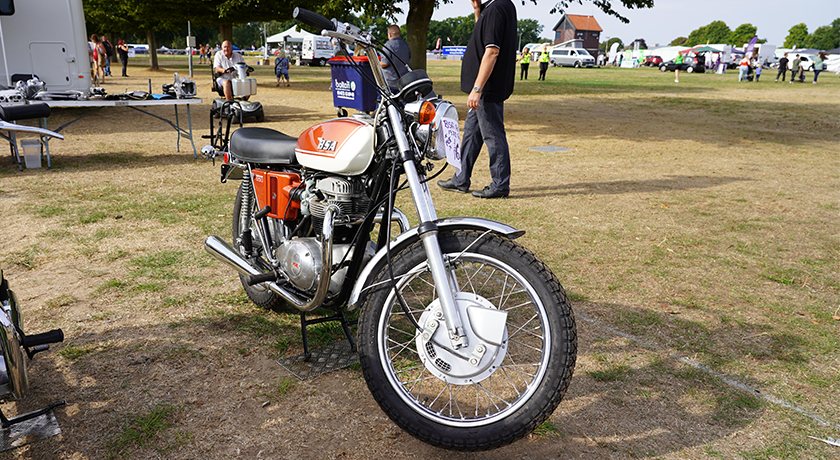
Advantages of purchasing a motorcycle from auction
You might find a sweet deal
As we mentioned earlier, commercial auctions tend to have a rather large amount of bikes that have been repossessed by finance companies who will want to get rid of the bikes as fast as possible meaning they won’t wait out for the highest bidder possible.
Opportunities to see the bike before the auction
Thankfully, there are some auctions out there that will let you come and see the bikes before they go up for sale - and if you’re lucky you might be able to squeeze in a small test ride!
This will vary between auctions though, so it is definitely worth asking beforehand if this opportunity is available to you.
Disadvantages of purchasing a bike from auction
Easy to get carried away
The excitement of an auction and feeling like you’re an extra on Antiques Roadshow can lead to you getting a little carried away and losing sight of the pre-agreed budget you set yourself.
Once you’ve made the purchase you can’t turn back
Once you have won a bid, there is no ‘cooling-off period’ meaning that a contract has been made and you will need to complete the purchase. This means you will need to be 100% in what you decide to bid on - as you may end up as the top bid!
You never know their true working condition until you own it
Again as we mentioned previously, motorbikes at auction are sold as seen meaning that you don’t get to see them running or being ridden. It advisable that you take a mechanic friend along with you (providing you have one) to help you pick out the good from the bad.
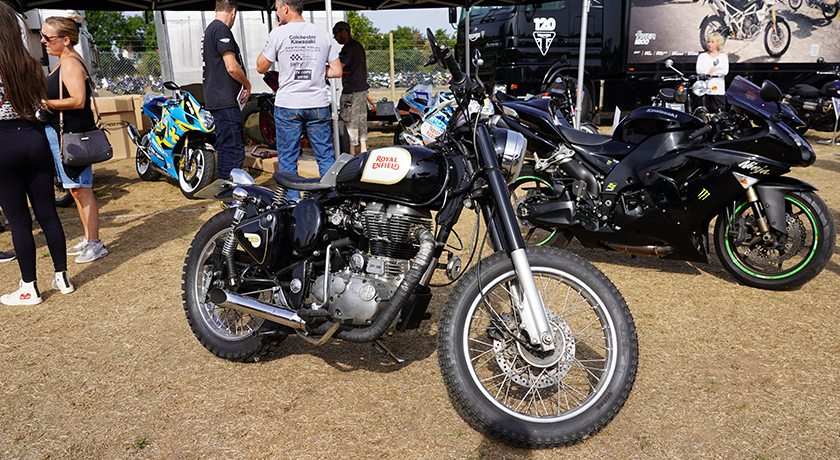
Ready to ride!
So there you have it, here is our full guide to buying a new or used motorcycle.
Last but not least, whether you are buying a new or used motorcycle and looking for insurance, make sure to get a motorbike insurance quote with Lexham either by filling out a quotation form online or by giving us a call on 01379 646529.



